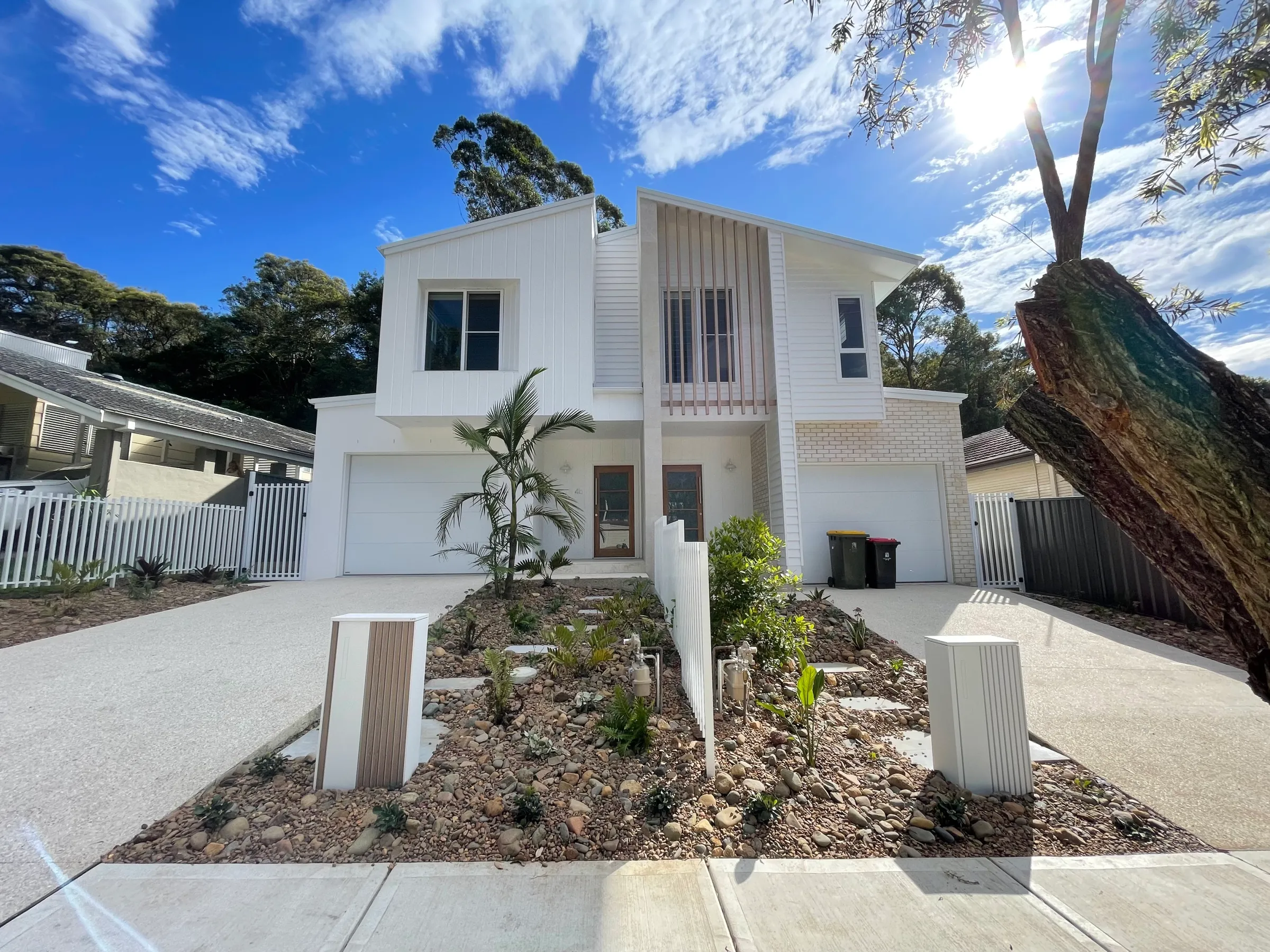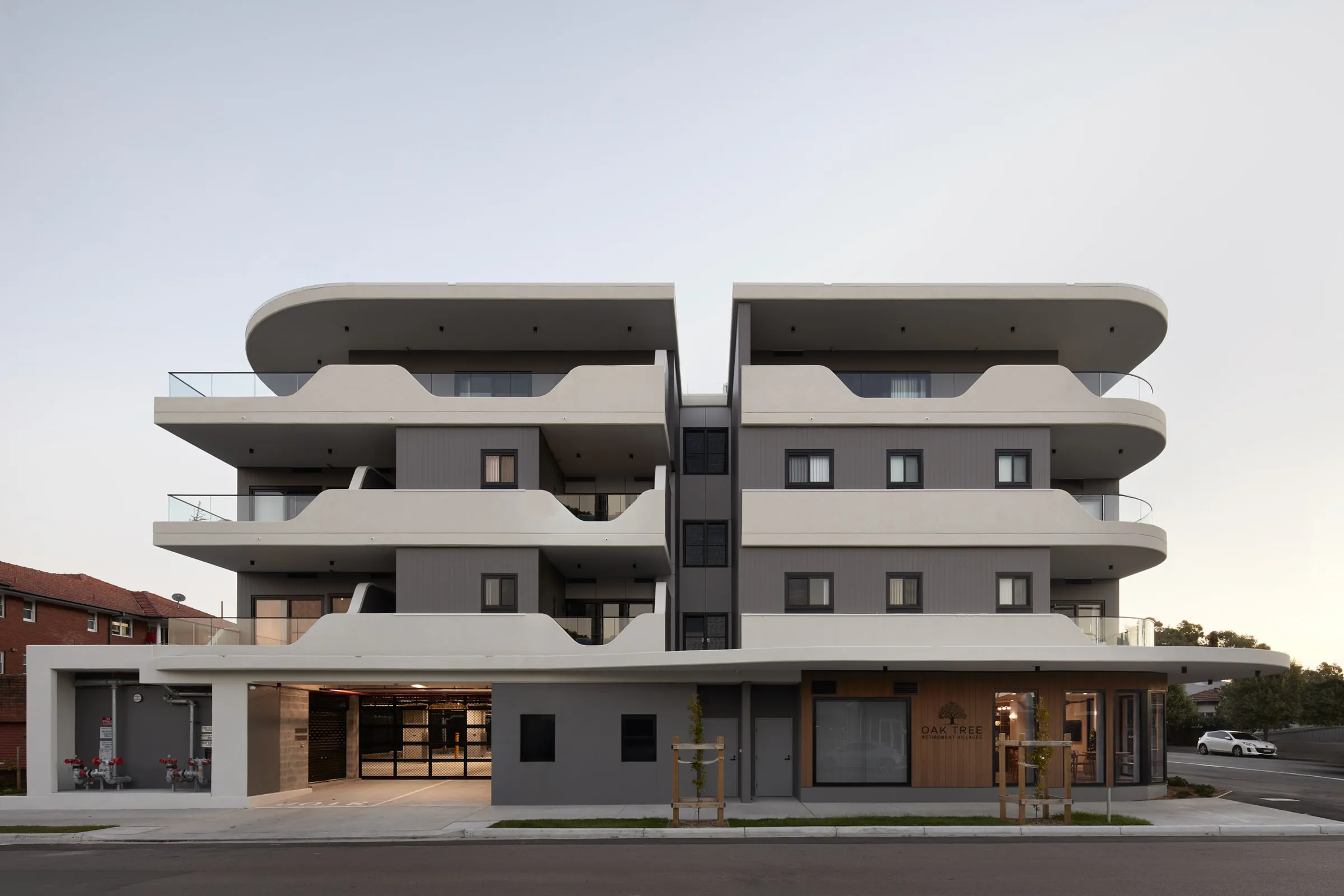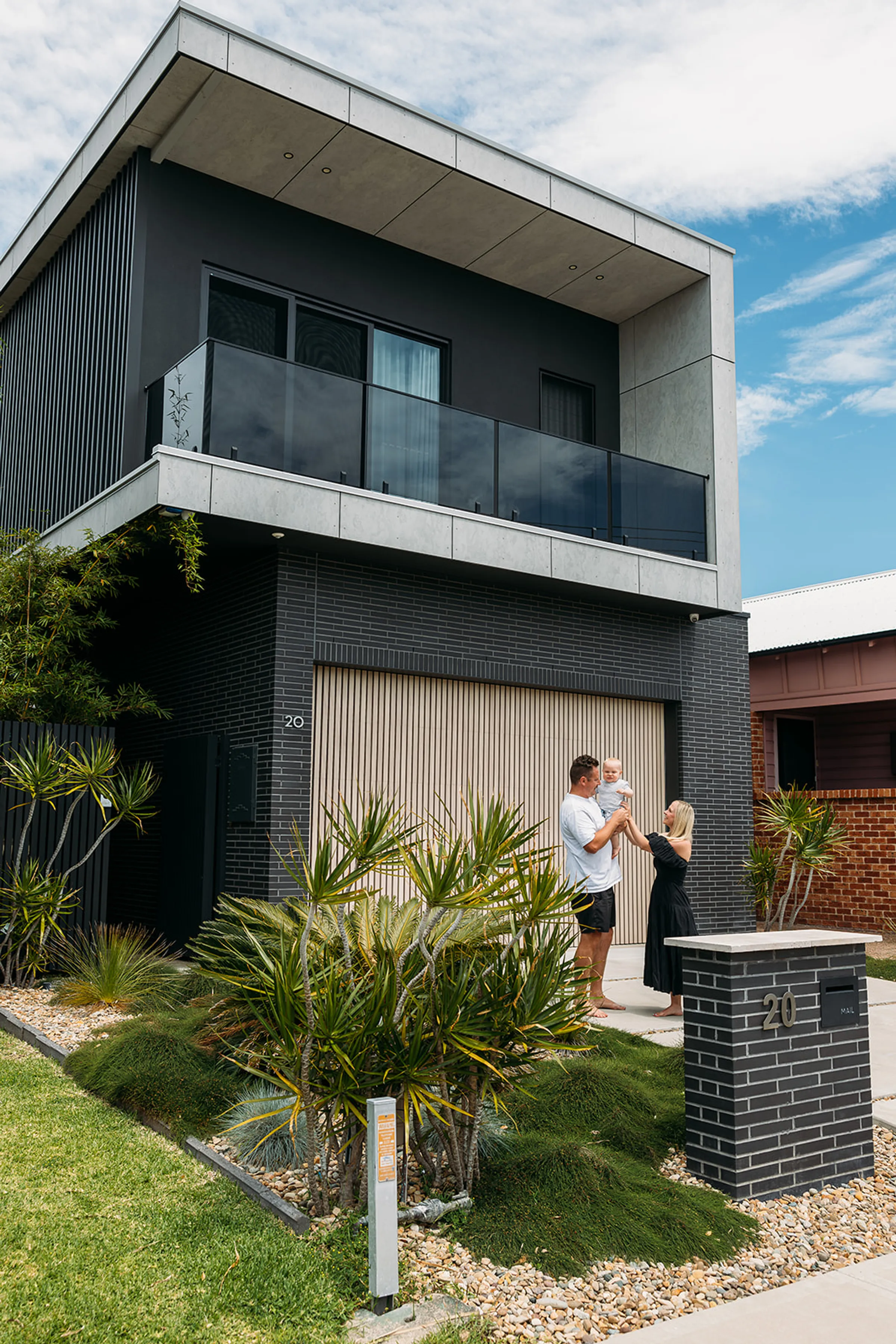
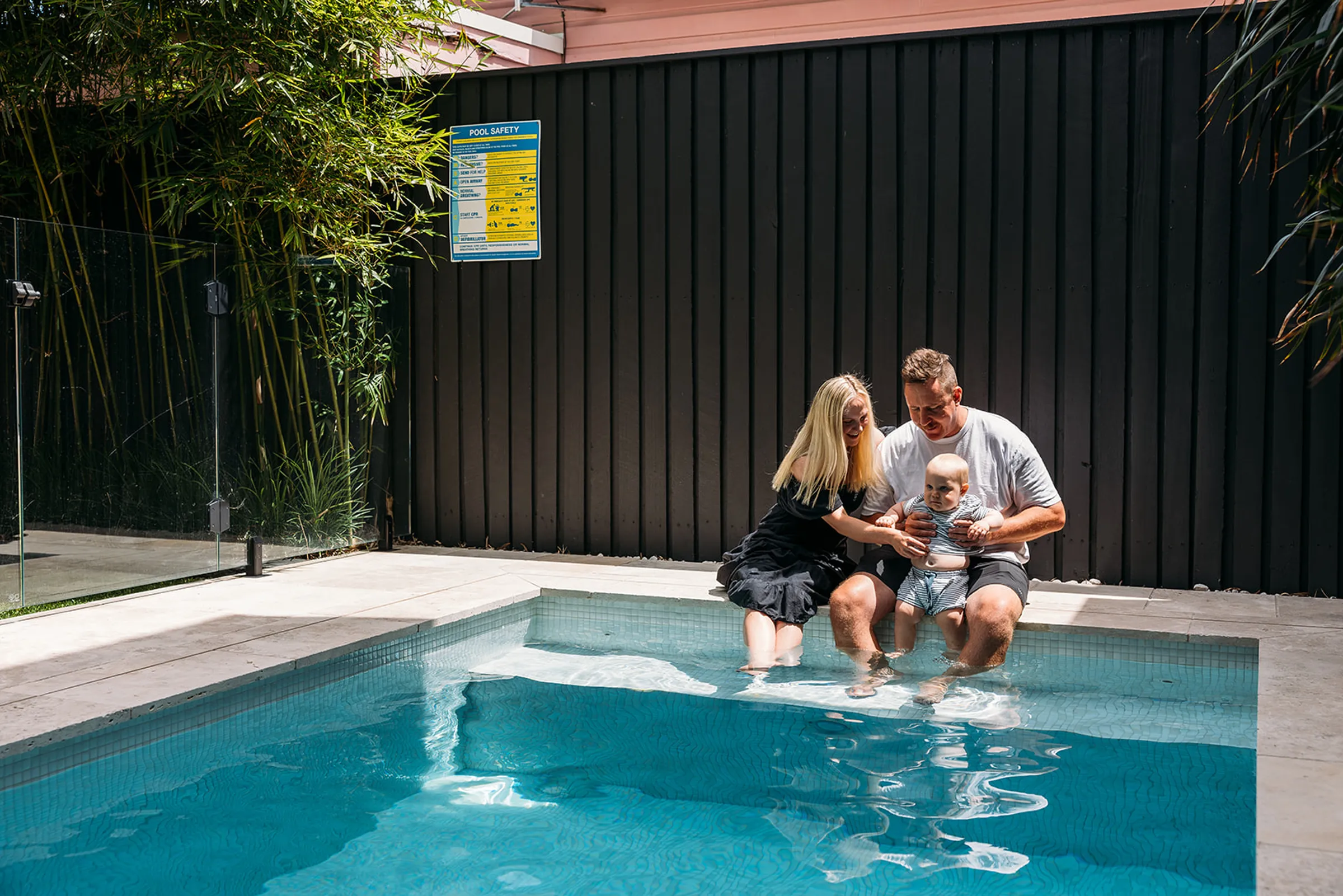
Pool Approvals QLD

We've got your pool approvals sorted, with expert support and guidance along the way.
Every pool in Queensland needs to meet strict safety standards, and that includes more than just the water. Fences, gates, boundary clearances, and even landscaping can all affect compliance.
Our job? To make this part simple. We’ll assess your pool and fencing plans, handle the building approval process, and carry out a final inspection after construction. Once everything’s up to code, we’ll issue your Form 17 (Final Inspection Certificate), giving you the official sign-off to enjoy your pool. Just note, this isn’t the same as a Form 23 Pool Safety Certificate, which we don’t issue.

How we get pool approvals, sorted.
01
Kicking OffWe’ll review your site and pool plans to confirm everything meets code requirements, including barrier placement, boundary distances, and access points.
Pool safety is non-negotiable. Getting it right at the planning stage helps you avoid costly rework later.
Site plan, pool design, engineering details, and any relevant forms (e.g. Form 15). From here, we can get your approval process swimming. But don't stress, we’re here to guide you every step of the way.
02
Pre-constructionOnce we have issued the building approval, we will send a copy to the local Council.
A warning sign needs to be placed at the road frontage informing the public that a pool is under construction and there is a potential danger to young children.
03
Pool Build & Barrier ChecksOur experienced certifiers will conduct inspections during the build, focusing on the pool fence and barrier compliance. You may need to provide supporting forms or make final adjustments.
A smooth approval process keeps your pool build moving; no surprises, no hold-ups.
We’ll check fence height, gate swing and self-closing features, climbable objects, non-climb zones, CPR signage and other safety essentials.
Barrier compliance is one of the most common reasons for failed pool inspections. We help you avoid those hiccups.
04
Signed, Sealed & SortedOnce your pool and fence are complete, we carry out a final inspection. If all’s compliant, we’ll issue your Form 17 Final Inspection Certificate; the certificate you need to show your pool meets QLD safety laws.
No certificate, no swimming. This sign-off confirms the pool is legal, safe, and ready for action.




[ Services ]
The right solution, every time.
Everything you need to get your approval sorted, in one place.
Certification sorted.
For projects big or small, Buildcert gets your certification sorted. Trusted experience, clear communication and fast turnarounds mean you get less stress, more certainty, and support to keep your project moving.

- +47000Approvals issued.That's over 47,000 approvals, sorted.
- 15.6B$Total value of construction approved.$15.6B of construction approved and counting.
- +275000Inspections completed.Clients trust Buildcert because we’ve got the experience and know-how to get your certification sorted.
"Buildcert’s building compliance expertise was invaluable during our recent upgrades. Their team brought confidence, clarity and professionalism to a complex project, ensuring everything stayed compliant and on track from start to finish."
"Buildcert has been a reliable partner for years. Their proactive approach, local knowledge, and responsiveness take the stress out of certification for our team."
"Buildcert are a valuable partner for our team. Their practical guidance, collaborative approach and clear advice help us deliver bespoke designs that meet compliance without compromising creativity."
Building or installing a pool? Let’s get your approval sorted.
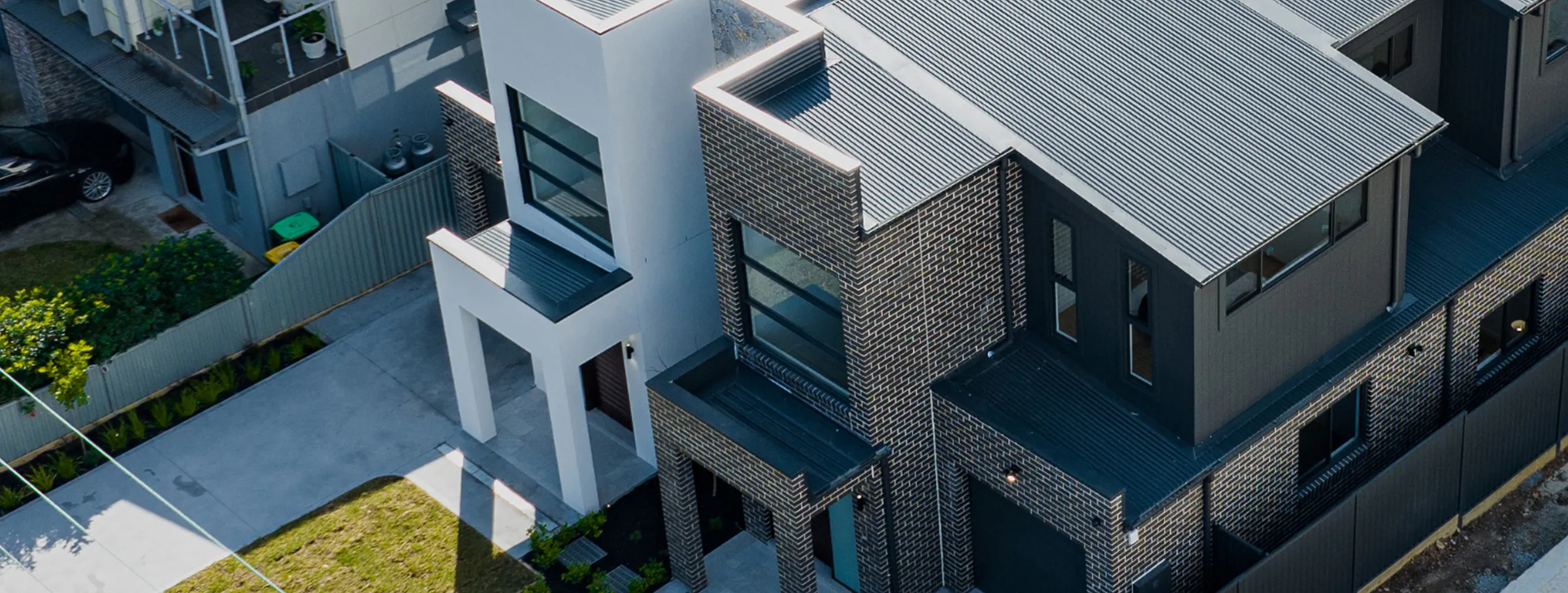
Frequently asked questions.
Got questions about pool approvals? Here are the ones we hear most often.
What’s the difference between planning approval and building approval? Do all projects need approval from Council?
Planning approval (sometimes called a Development Approval - DA) is issued by the local Council. It deals with land use and relaxation matters such as setbacks, zoning, flood or heritage overlays. Building approval is issued by a certifier and relates to how the structure is designed and built to meet the Building Code and legislation.
Some projects need both planning and building approvals and others can go straight through private certification. If council approval is required, we’ll guide you on that process and coordinate referrals as part of our role.
Does my pool need building approval in QLD?
Yes. All new pools in Queensland need building approval, this includes above-ground, in-ground, fibreglass, concrete, and DIY pools or spas (even if they have a lockable lid). The approval covers both the pool structure and the required safety barrier.
What documents are needed to start an approval?
A typical submission includes:
- Site plan, floor plans, elevations
- Engineering details if required
- Design compliance (Form 15) if required
- Energy efficiency report
- Soil/site data
- Title Search
- The correct Development Application (DA) form (usually DA Form 2 for building work)
This can change depending on the project, but don’t worry, we will guide you through what's needed.
What do I need for quoting?
A site plan should identify the structure on your property and show setbacks to boundaries and existing structures. If you wish to create your own, you can visit Site Plans Online, however we recommend using a professional architect or draftsperson.
How long does an approval last? Can it lapse?
Your building approval is valid for 18 months. If work hasn’t substantially started or finished within that timeframe, the approval will lapse.
A Form 57 reminder will be issued 3-6 months before the deadline. And if you need more time, there may be options to extend upon application.
How long does approval take?
This depends on the completeness of documents, whether planning referrals (e.g., relaxation variations, overlays) are needed, and how quickly RFI items are returned. We aim to have your project reviewed within 3-5 business days of engagement.
What happens if my pool doesn’t pass inspection?
If your pool or fence doesn’t pass inspection, we’ll provide a clear list of what needs fixing. Once those items are rectified, we’ll re-inspect to confirm everything meets safety standards. You can’t legally fill or use the pool until compliance is confirmed and your Form 17 is issued.
Do I still need a Pool Safety Certificate (Form 23)?
Not for new pool construction. The Form 17 we issue as part of your building approval is different. A Form 23 Pool Safety Certificate is only required when selling or leasing a property, and it’s issued by a licensed Pool Safety Inspector, not your building certifier.
Toolbox
Sorted.


